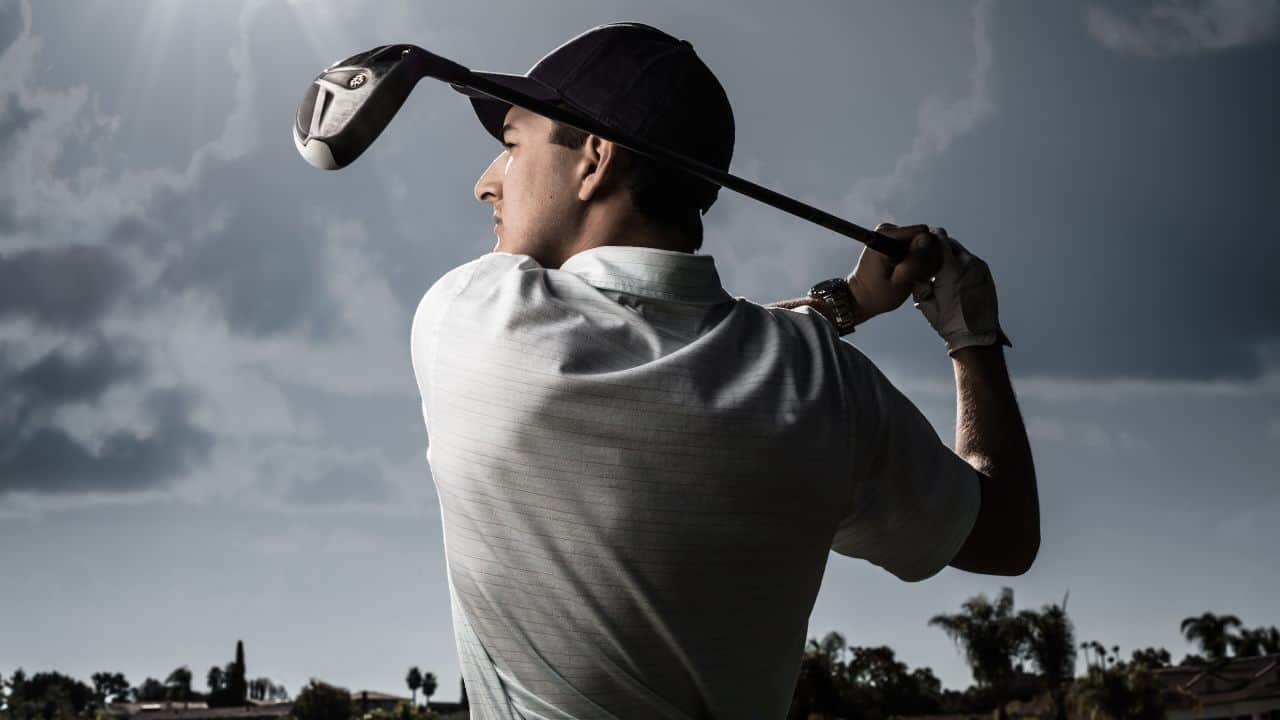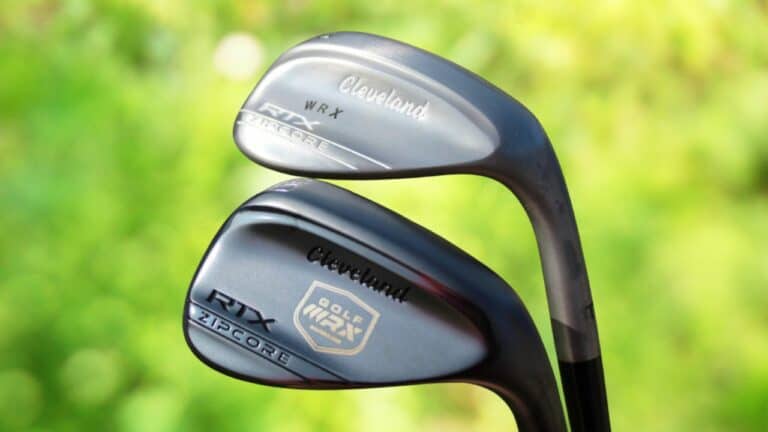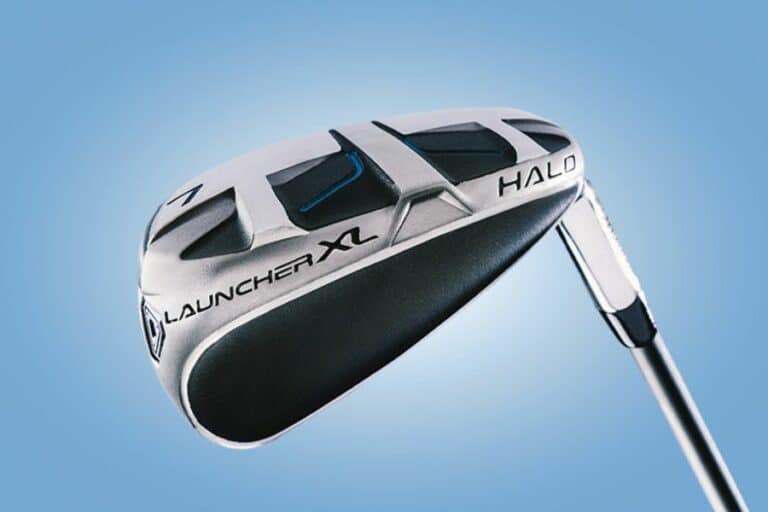Can A Left Handed Player Use A Right Handed Golf Club?

A left-handed player cannot use a right-handed golf club. However, if you watch golf on TV, you may have noticed that some lefty players do play with right-handed golf clubs. Although it is not recommended, it is technically possible for a left-handed player to use a right-handed golf club in certain situations.
Let us explore why it is not recommended and in what scenarios left-handed golfers might consider using a right-handed club.
I. Can a left handed player use a right handed golf club?
A left-handed player cannot use a right-handed golf club because it is not designed for their natural swing. Left-handed golfers need to stand on the left side of the golf ball and hit it from the left.
Using a right-handed club would lead to hitting the ball with the club’s backside, causing substandard shots.
The only exception might be when obstructions prevent left-handed golfers from standing on their preferred side, forcing them to adjust the club’s toe downwards. However, this is an unusual circumstance and not a suggested method.
II. Difference between left handed and right handed golf clubs
The main difference between left and right-handed golf clubs is the club head design, while the shafts and grips remain universal, allowing players to choose a club head that suits their dominant hand.
Club heads
Right and left-handed club heads are mirror images of each other, except for certain putters. Left-handed players stand on the left side of the ball, with their left hand at the bottom and right hand at the top of the grip.
Their swing begins behind the left shoulder and ends behind the right shoulder after hitting the ball. Right-handed players mirror these actions but need the club head to face left for proper ball contact.
The main difference between left and right-handed clubs is the direction of the club head. For example, a left-handed player using a right-handed club would hit the ball with the back of the clubface.
While most clubs sold have right-handed heads due to the majority being right-handed, many golf brands also provide left-handed options.
III. What are the problems with left-handed golfer playing golf right handed?
Left-handed golfers attempting to play right-handed face several challenges:
- Disorientation: Switching from the left side of the ball to the right can lead to unfamiliarity and discomfort. This change can result in a lack of confidence and inconsistency in their game.
- Lack of Skill Transfer: The skills developed by left-handed golfers, such as muscle memory, coordination, and timing, do not easily transfer when they switch to a right-handed swing. This discrepancy can significantly impact their accuracy, power, and overall performance.
- Uncomfortable Grip: Using a right-handed club may lead to an awkward grip for left-handed players, contributing to discomfort during the game.
- Unnatural Swing Path: Left-handed players using right-handed clubs often struggle with maintaining a natural swing path, which can affect their shot execution.
- Difficulty Controlling Ball Direction: The change in hand dominance can cause left-handed players to struggle with controlling the direction of the ball, leading to potential inaccuracies in their shots.
IV. Techniques for Left-Handed Players Using Right-Handed Clubs
The adaptability of a golfer is often the secret ingredient that turns a good player into a great one. Here are some techniques that can help left-handed players make the most of a right-handed club.
1. Grip Adjustments
The key to effective use of right-handed clubs for left-handed players lies in modifying the grip. The overlap and interlock grips are popular choices, allowing more control over the club, but a grip that feels comfortable and natural to you is crucial.
2. Swing Modifications
Left-handed golfers using right-handed clubs can benefit from relatively straighter shots. By aligning the swing to the correct path, straight shots can be more easily achieved. However, it’s important to be mindful of the potential for unintentional fades or slices due to the hand-eye coordination discrepancy.
3. Club Selection Tips
Club selection becomes all the more important for a left-handed golfer using a right-handed set. Opting for clubs with a good lie angle can help alleviate the stress on the wrist and promote a swing that is more aligned with the natural motion of a left-handed player.
V. Can a right-handed golfer use a left-handed club?
Similarly, a right-handed player can use a left-handed club, but it’s not typically recommended.
The issues they would encounter are similar to those faced by a left-handed player using a right-handed club – awkward grip, unnatural swing, and less control over the ball. In short, using a golf club designed for your non-dominant hand can significantly impact your performance on the golf course.
VI. Tips to determine which hand you are in golf
Determining if you are a left or right-handed golfer is important for selecting the proper clubs. Here are some tips to help you figure out whether you’re a right-handed or left-handed golfer:
- Hand Placement: For right-handed golfers, the left hand is on top of the grip and the right hand below it. Left-handed golfers reverse this placement.
- Hip Turn Exercise: Practice a series of hip turn exercises to understand your natural movement and dominant side.
- Club Face Observation: The direction of the clubface can indicate whether it’s a right or left-handed golf club.
- Stance and Swing: Your stance and swing direction can also suggest your dominant hand. Right-handed golfers typically have their left foot forward and swing from the right, while left-handed golfers do the opposite.
VII. Key considerations for left-handed golfers using right-handed clubs
- Before you fully commit to using right-handed clubs, try them out at the driving range or during casual rounds to see if they feel comfortable for you. Pay attention to how your swing feels and how consistent your shots are.
- It’s a good idea to get lessons from a golf instructor, especially one who has experience with left-handed golfers using right-handed clubs. They can help you adjust your game and make any necessary changes to your swing.
- If you decide to stick with right-handed clubs, consider getting a custom fitting session. This ensures that the clubs are tailored to your body’s specific characteristics, improving your comfort and performance on the course.
- Hybrid clubs can be a great option for left-handed golfers using right-handed clubs. These clubs are versatile and can help you handle different situations on the course more effectively.
- Practice both left-handed and right-handed shots to improve your versatility as a golfer. This will make you more capable of handling various challenges on the course.
VIII. Professional golfers who play left-handed golf
Here’s a list of professional golfers who play left-handed, including those who are naturally left-handed but play right-handed:
- Phil Mickelson (naturally right-handed, plays left-handed)
- Mike Weir
- Bob Charles (first left-handed golfer to win a PGA Tour tournament)
- Bubba Watson
- Steve Flesch
- Brian Harman
Golfers like Jordan Spieth, Curtis Strange, Greg Norman, and Ben Hogan are naturally left-handed but have achieved success playing right-handed due to the advantages of right-handed clubs.
IX. Why are there so few left handed golfers?
Fewer left-handed golfers exist mainly due to golf course designs favoring right-handed players and a lack of left-handed equipment.
Courses typically have more hazards on the left, causing lefties to switch to a right-handed game. The scarcity of left-handed golf gear, with new releases often catering first to right-handed players, exacerbates this issue.
Despite recent efforts by manufacturers like TaylorMade to cater to left-handed players, the supply-demand gap persists, pushing many left-handed players to adjust or switch sides.
X. As a left-hander, should I use left-handed golf clubs?
No, You’re not restricted to playing golf left-handed just because you’re left-handed. It’s important to find what feels most natural and comfortable for you. Some left-handers find they swing better with their left hand leading, while others are Versatile and can play equally well with both hands.
It’s perfectly fine for left-handed golfers to play with right-handed clubs if that feels right for them. However, consistency is key, so once you’ve chosen a side, stick with it to avoid confusion. If you’re unsure which side suits you best, try shots from both sides to gauge power and comfort.
Once you’ve made your choice, focus on practicing and strengthening your skills on that side. And if you opt for playing left-handed, ensure all your clubs are left-handed too.
XI. Should you play right or left handed golf?
Professional golfer Jordan Spieth suggests that your choice between right or left-handed golf should be guided by where you feel most powerful. Control can be mastered over time, especially for younger players.
If left-handed play feels more natural, don’t settle for playing right-handed as it could limit your performance. It’s important to learn in a way that suits you best.
While there may be an initial challenge finding left-handed golf clubs due to lesser availability, consider investing in them if you’re a left-handed player. They can be found at specialized golf stores or online and could significantly improve your game. Always choose what enhances your comfort and performance on the course.
XII. What percentage of golfers shoot left?
Left-handed golfers make up a relatively small percentage of the overall golfing population. It is estimated that only around 5-7% of golfers shoot left-handed, with the majority being right-handed players.
This statistic further highlights the rarity of left-handed golfers and their unique presence in the sport.
Conclusion
Left-handed players cannot effectively use right-handed clubs, as they are specifically designed for right-handed golfers.
A left-handed person should stick to play golf using left-handed clubs to ensure optimal performance and accuracy in their swings. Right-handed clubs are not interchangeable with left-handed ones, and attempting to use them can lead to difficulties in shot execution and overall gameplay.
FAQ’s
1. Do left-handed golfers have an advantage?
While there’s no concrete proof that left-handed golfers have a distinct advantage, their left-handedness could potentially enhance their creativity and imagination on the course. The unique orientation of left-handed players might foster improved rhythm, visualization, and intuition.
2. Is Tiger Woods A Left-Handed Golfer?
Tiger Woods is naturally right-handed but has developed his golf skills to the point where he can play left-handed shots when needed. This ambidexterity is a testament to Woods’ talent and versatility on the golf course.
3. Can you have both right and left-handed clubs in your bag?
Golfers typically carry clubs that align with their dominant hand, but there’s no rule preventing you from having both right and left-handed clubs. Some golfers favor a variety to tackle diverse shots and course designs.
If using both right and left-handed clubs feels comfortable and improves your game, you’re free to include a mix in your bag. However, make sure that the number of clubs in your golf bag is within the limits set by the USGA.
4. How does a left-handed golf club differ from a right-handed one?
Left-handed and right-handed golf clubs differ only in the direction of the clubhead, which faces the opposite way for left-handed players. The shafts and grips are universal. The exception is left-handed putter shafts, which can be bent. Golf accessories like bags and clothing are the same for both left-handed and right-handed players.








